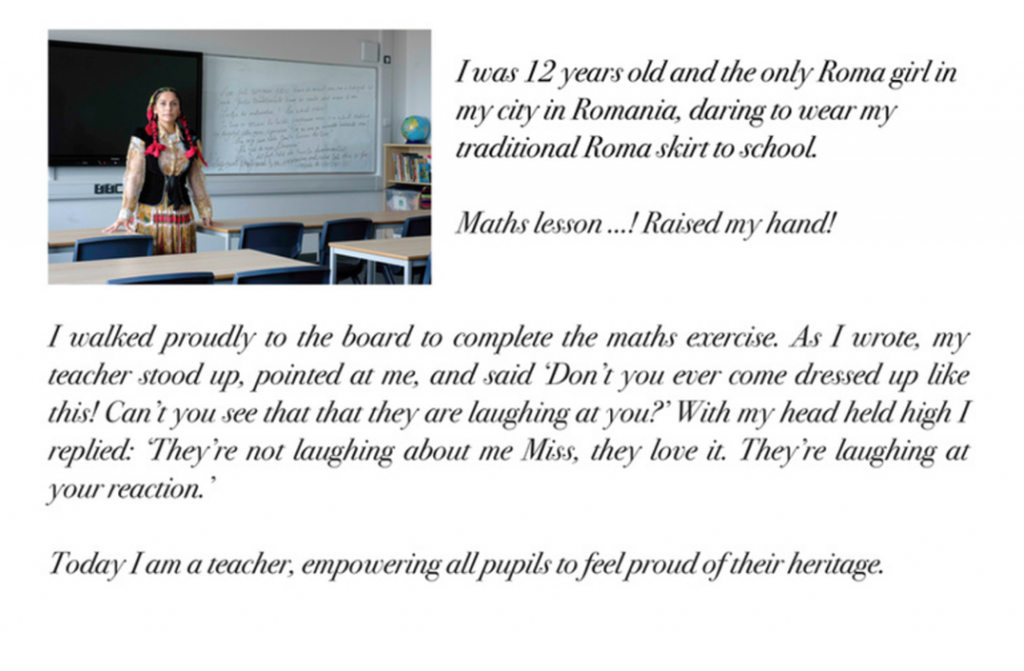|
Digital meets Culture https://www.digitalmeetsculture.net/article/we-carry-it-with-us-the-impact-of-childhood-bullying-on-adult-life/ Export date: Mon Mar 31 20:32:37 2025 / +0000 GMT |
'We Carry It With Us’: The impact of childhood bullying on adult life by Jeremy Abrahams, Rosa Cisneros and Terezia Rostas Jeremy Abrahams is a Sheffield-based photographer whose work is predominantly environmental portraiture and documentary, and focusses on positive representations of migration and related issues. Since becoming a professional photographer in 2014 he has had five solo exhibitions. His work has been supported by Arts Council England. His images have been published in the The Guardian, The New York Times, The Sunday Times, The Scotsman, The Yorkshire Post and others. Currently he is working on producing “We Carry It With Us”, a collection of environmental portrait photographs combined with handwritten text on the prints telling an element of the subjects' story in their own words. The project has photographed several individuals from various socio-economic backgrounds and stories. Jeremy has travelled across the UK to sit and learn more about the individuals he is photographing and collaboratively produce the final image. When I asked Jeremy about the project he explained the ambitious aims and said he set out to do the following:
“The project stems from personal experience of anti-semitic bullying during my school years. Having developed the concept through a programme of mentoring I then reviewed research in other fields.”  © Jeremy Abrahams 2022 Jeremy has underpinned his creative project with academically sound data that was carried out by Ellen Walser deLara, an American academic in social sciences. Her research into childhood bullying on adult life found that the impact of bullying often persisted into adult life and manifested itself in a number of ways. Through her interviews with 800 people she identified that there is a lack of self-esteem, emotional problems, difficulties trusting others, substance misuse, people pleasing tendencies, as well as positive and unexpected outcomes. More on the research can be read in her book “Bullying Scars”. Through deLara's work 47% of the participants reported positive impacts of childhood bullying highlighting that there was a commitment to ensure that others are not treated the same way, a desire to achieve to demonstrate their self-worth and a sense of empathy for others. Jeremy says: “The project is not shying away from difficult situations and asks individuals to face, discuss and explore ideas to represent that challenging experience. However, the final body of work will represent many people who turn their trauma into activism, so that an exhibition is an uplifting experience. An exhibition would also have scope for further public engagement. Bullying is a universal experience; most people have either been bullied, been a bully or observed it. All the visitors to an exhibition will have a personal response. Therefore, the exhibition should give them an opportunity to share their response. This could be done by creating a dummy book of the exhibition images, but without the subject's text. Visitors could then write on the image themselves, so the dummy book would become part of the artwork.” Moving forward to 2022, Jeremy invited Roma educational consultant and qualified teacher, Terezia Rostas, a Romanian Gabor Roma now living and working in Sheffield, UK to participate. The two collaborated and produced a photo that represents a sort of “turning point” for Terezia where she stood up to a teacher that bullied her.  © Jeremy Abrahams 2022 When interviewed, Terezia said that she was incredibly excited and humbled by the experience and said that the project was a great example of challenging hate crime and bullying which leads to social change and a better world. “Being part of the childhood bullying project led by Jeremy brought to light my entire childhood, meaning and purpose in life. It was an unfortunate experience of bullying, however this made me challenge myself and people like my teacher from primary school to prove that they are wrong. There is nothing more powerful than to be you, in all senses. Not allowing the society's rules, prejudice and stereotypes to change you, to be what you truly are with your whole cultural richness, beliefs, heritage and love for a culture in which you have been raised. Always be proud of this privilege and uniqueness. I have no words to express how amazing what Jeremy is doing through this project is and how he is going to share it with the world. Can you imagine, that thousands of people will be seeing, reading, feeling the same maybe and learn from these experiences, only through a photo with a short text exposed in various museums or virtually.” – Terezia Rostas Rostas has used the image in a number of different educational environments, such as her work at Sheffield Park Academy, the EU-Funded Erasmus+ Project, RTransform, and also exhibited it at the Welcoming Cultures event at the Millennium Gallery in Sheffield. This image has been a stimulus to explore bullying from a number of different perspectives. Roma activist, Terezia has engaged many young Roma girls to discuss their educational barriers and how they might turn those into academic success. To find out more and see thee other images, visit his website: https://www.jeremyabrahams.co.uk/wecarryitwithus Contact Jeremy Abrahams info@jeremyabrahams.co.uk If you would like to participate in the project Jeremy would love to hear from you. |